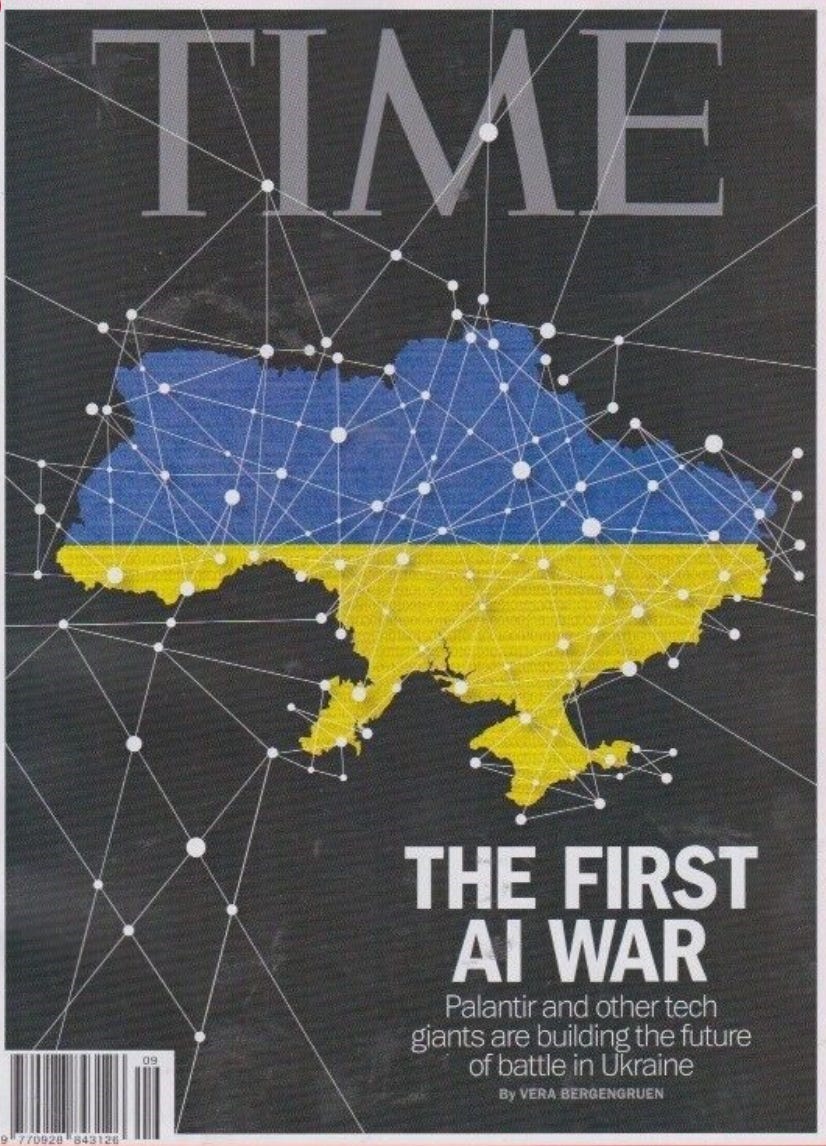The New Cold War: You Can’t Tell the Players Without This Program
The threats (and dollars) are climbing ...
Take a look at a recent Time magazine cover.
Zero in on that headline …
Artificial intelligence (AI) as a weapon … with the help of Silicon Valley … to battle Russia … in The Ukraine.
Welcome to the “New Cold War” … where global defense dollars are flowing … new technologies are firing … new enemies are rising … and old ones are returning.
In this two-part special report, I take a personal dive into the first Cold War (1949-1991) and use it to explain what’s happening as Cold War 2.0 spools up – and as projected worldwide military spending surges from its record $2.24 trillion in 2022 to nearly $3.3 trillion by the end of the decade, says the Stockholm International Peace Research Institute (SIPRI), an independent think tank that’s one of the leading authorities on arms, military spending and other global security issues.
Here at Stock Picker’s Corner (SPC), we follow the big storylines. To find the biggest opportunities.
And the New Cold War isn’t just a money story.
It’s a table-setter … and a catalyzer … that’ll shape the world we live in a decade from now — or more.
That’s why I’m studying the Cold War’s “Second Act” – and the subplots that accompany it.
Subplots like:
The Return of Old Foes: Russia and China served as the Evil Empire foils to America and its Western Allies in Cold War I. They’re back and (as those TV promos say) “badder than ever.”
Some New Cast Members: A potentially fully nuclear North Korea wasn’t in the OG Cold War – but it figures to be in the sequel. Recent reports say that Pyongyang and leader Kim Jong Un will look to make major noise with nuke and/or missile tests as we close in on the November presidential election. In the meantime, new “stateless” foes have emerged, too.
Keep-Up-With-The-Joneses Spending: Yeah, I know I said it wasn’t just a money story. But money will help drive the subplots. Take China. While the proposed U.S. defense budget for next year increases only 1%, Beijing has been aggressively growing its military budget. It’s up 7.2% for 2024 – which follows increases of 7.2% in 2023, 7.1% in 2022, 6.8% in 2021, 6.6% in 2020 and 7.5% in 2019, government reports say. (And some experts claim Beijing understates those figures.) Beijing has boosted defense spending for 28 years in a row. And the budget in 2022 was 63% higher than in 2013, SIPRI says.
All New Acronyms: The military loves creating acronyms – especially weapons systems. And we’ll have new ones to learn – like AI, DEW (directed energy weapons), HGV (hypersonic glide vehicles), A2/AD (anti-access/aerial/denial), UAV (unmanned aerial vehicle), UUV (unmanned underwater vehicle) and C5ISR (command, control, communications, cyber, intelligence, surveillance and reconnaissance). These are some of the new technologies, and new weapons systems, that will command the battlefields of the future. And some of those battlefields will be in cyberspace – and outer space.
Deglobalization: Decades of pushing to integrate world markets are being reversed – undone – as flintiness escalates. That move back toward “trading blocs” has consequences – and creates opportunities. Here in the United States, we’re seeing “onshoring” of manufacturing, which will be highly bullish for America’s semiconductor industry.
So while many changes unfold, and new risks emerge, investors will find plenty of ways to build wealth. And we cover all this – and more, including companies to watch and stocks to consider – in our two-part special report.
In Part I, I use the original Cold War as a kind of “table-setter” to explain what to watch for now. In Part II, I talk about trends to consider and companies to watch.
Let us know what you think.
See you next time








